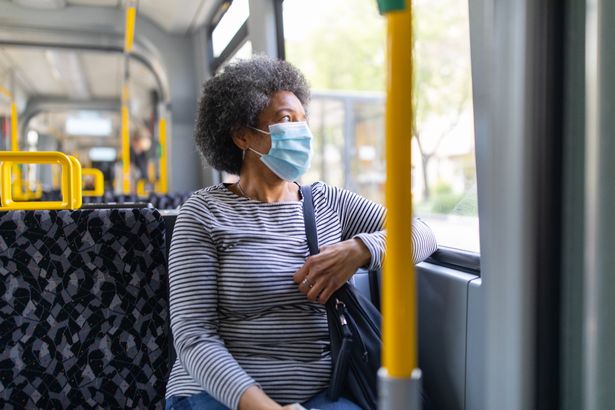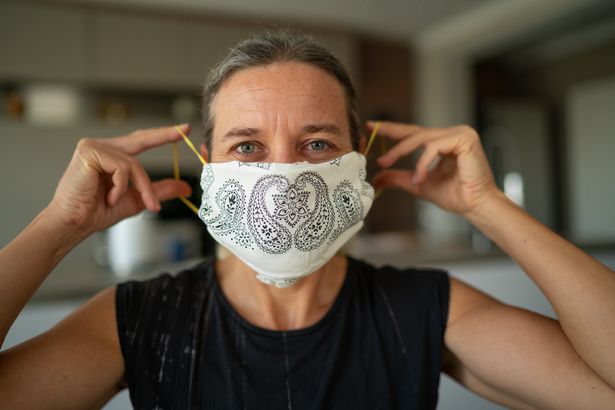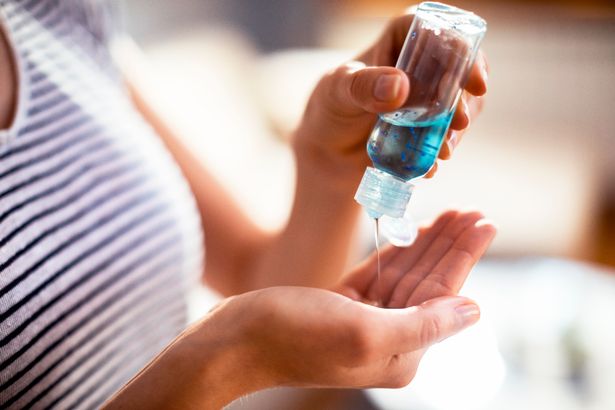Popping to the shops or jumping on the bus are no longer the simple day-to-day activities they used to be.
For weeks, we’ve been advised to avoid public transport and only shop for essentials.
But with more shops opening, and following the news that it’s now essential in England and Scotland to wear face coverings on public transport, here’s what the experts have to say.
Current NHS advice states: You must wear a face covering at all times on public transport or when attending a hospital as a visitor or outpatient
“Evidence suggests that wearing a face covering does not protect you.
“However, if you are infected but have not yet developed symptoms, it may provide some protection for others you come into close contact with.”
Why do we need them?
Wearing a face covering can help stop the spread of coronavirus as they trap droplets created when people sneeze or cough.
They act as a barrier between people and, therefore, in areas where social distancing isn’t possible, they are essential.

Where do we have to wear them?
The government have said it’s now essential to use face coverings on every mode of public transport in England and Scotland, as well as in hospitals. If you fail to do so, you could be fined £100.
The rules are the same for everyone, apart from children under the age of 11, people with disabilities and breathing problems, and anyone travelling with someone who needs to lip read.
How to put a covering on
● Wash your hands with soap and water or use a hand sanitiser gel to ensure your hands are clean before touching the face mask.
● Inspect the mask before wearing it to ensure it’s not damaged or broken, and always pick it up by the fastenings such as ties, headbands or ear loops, rather than the mask itself.
● Bring the mask to your face and secure it, make sure it fits comfortably and covers your nose and mouth.
● Wash your hands again and don’t touch the mask or the rest of your face.
How to take them off

● Once you’re ready to remove your face mask, wash your hands with soap and water or use a hand sanitiser.
● Only touch your mask by the fastening at all times, lifting the mask away from your face.
● If your face mask is single use only, dispose of it correctly.
● Once again, wash your hands or use a sanitiser gel.
What are the differences between masks?
We are not required to wear medical masks, just a ‘face covering’, which could be homemade or bought.
Surgical masks
‘Surgical masks are disposable and sufficient when you are out and about,’ explains Shyam Morjaria, medical director at UK Meds. ‘They can be worn for three to eight hours,’ adds Shyam.
‘The key to knowing when the mask needs to be changed is how wet the mask is from the humidity of your mouth,’ says healthcare entrepreneur Kevin Lamb.

Respirator masks
You may have seen N95 or N99 respirator masks on sale. These are medical grade masks – for travel and everyday use, we do not need this level of protection.
‘The number translates into the density of the mask and the particulate that can go through it,’ explains Kevin. ‘For example, N95 would provide 95% protection and N99, 99%.’
Valved masks
‘Unvalved masks mean that the filtration system is built into the fabric, meaning they can be lightweight and fairly discreet,’ explains Shyam.
‘A valved mask can be slightly bulkier and heavier, but it allows air to be let out of the mask, making them more breathable and comfortable to wear.’ Most construction masks are valved, so if you have one, use it.
Homemade masks
Many people have made masks from old T-shirts or duvet covers. And even though these don’t have a filtration system, any covering is better than none.
‘Simple fabric masks can be helpful in preventing the spread of coronavirus. They provide the least protection, but a higher level of protection than not wearing a mask at all,’ Shyam says.
‘The more layers, the more protection,’ adds Kevin. ‘Some people use coffee filters or paper towels for protection and it’s good to do this.’
Try one of these…
Pet print mask (with two filters), £15.99, Prezzybox.com
Mask made of recycled ocean plastic (with five filters), £23, Wearmaask.com
‘I’m smiling’ mask, £9.95, Scotch-Soda.com
Protective snood, £20, Virustaticshield.com
– For further health advice or information on UK Meds, please click here. For more information on Keith Lamb, click here.
